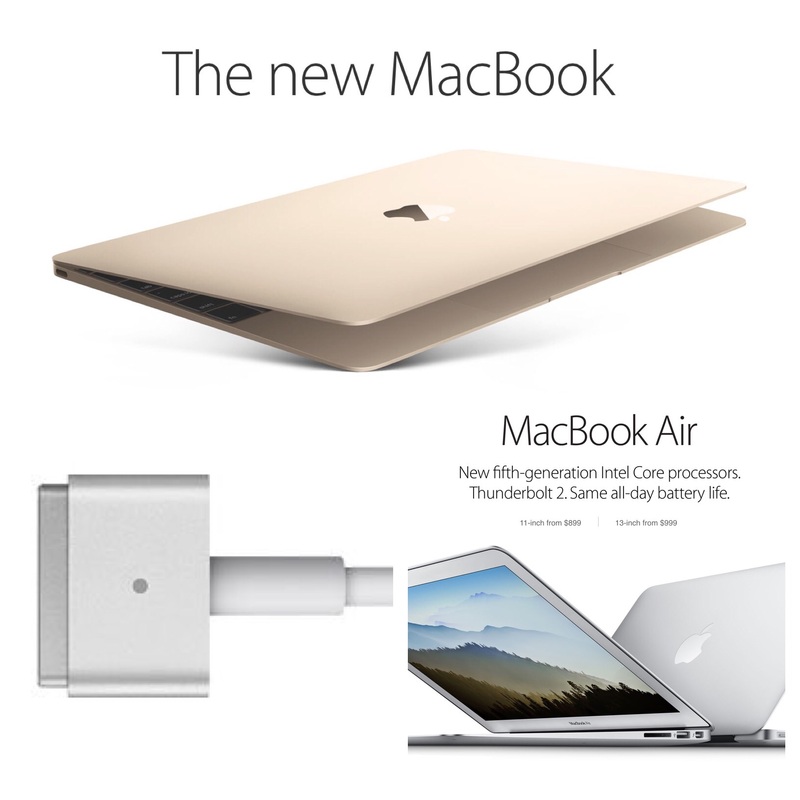I’m convinced we didn’t get exponentially more warranty power jack repairs because when the cord was caught on something, the laptops were usually knocked onto the floor. In this case the customer had much larger problems and probably just decided to buy a new laptop since the warranty never covers accidental damage. So these poorly designed power systems had the added "benefit" of potential early upgrades, besides reducing material and assembly costs. The PC manufacturers were let off the hook by the consumers because they perceived having to replace a laptop that crashed to the floor as being their own fault, not because of some sort of design flaw. There was no incentive to design a better power jack since most people who broke theirs didn't make a claim.
So when I laid my eyes on Apple’s MagSafe 2, it had me at "Hello." The retina screen grabbed all the headlines, but for a laptop manufacturing analyst like myself, it was the MagSafe 2 that spoke the loudest. It most certainly cost more to purchase the necessary parts and assemble this into the MacBook. Customers didn’t blame the PC manufacturer when someone walked into their cord and they saw their precious laptop doing a reverse backflip onto the floor. They might even miss out on more sales due to customers replacing their damaged laptops. Why would Apple do this? Simply because it was a better way? Yes. I can’t think of any meaningful financial payoff for that move. It’s hard to imagine much of a sales increase due to a fancy power management system, only a lot of added material cost.
So why would Apple leave the MagSafe 2 off of their latest new MacBook and move to the new USB-C? Couldn't they have made a MagSafe-like magnetic adapter at least? Well, from a financial analyst's point of view, it makes perfect sense. The MagSafe 2 is premium feature for premium laptops. The new MacBook is the lower model. It’s not going to get a MagSafe-like feature. It can make do with the standard option that all other cheap laptops will get. Using an industry standard is going to result in lower material costs, and it appears to be a less complicated mechanism that should result in lower manufacturing costs.
Limiting the MagSafe 2 to the MacBook Pro will enhance that product line as the premium line worthy of a higher price. Along with the more powerful processors and access ports it can tempt buyers to pay its higher price with its greater promise of durability. Buyers like me who may be on the fence between the two models may be swayed by the awesome MagSafe 2.
Whoever was in charge of the new MacBook was probably forced into using a standardized power system. I’m guessing the new MacBook was designed to be a sub-$1000 notebook. The three legs of this stool are as follows.
- No movable parts - This reduces labor and warranty costs.
- Consolidated volume - By not having a split product line such as the 13” and 11” MacBook Air, material purchasing power will be leveraged by just having one 12” model in the future.
- Only 1 Port - Less holes drilled in the aluminum alone will yield significant savings. In addition to getting more aluminum cases done per hour, there will be less yield loss. And I haven’t even touched on the cost/warranty savings of leaving out the electronics for the other ports.
So if the MacBook was designed to cost less than a thousand dollars, why is it starting at $1,299? And if the MacBook is the successor to the MacBook Air, why is the Air still on sale? Well, if I were at Apple advising Tim Cook, following would have been my rationale.
The MacBook Air is at that wonderful Nexus of volume and cost where it's gross margins are sky high. All the money Apple sunk into fixed assets and tooling for the Air have been fully depreciated and now the Air is enjoying higher profit margins than ever. You want to milk that cash cow as long as you can and end its life through a managed descent. It's the same rational that allowed the iPad 2 to stick around for so long.
Take your time with the new MacBook and manage your risk with a drastic new product like this. If the market balks at the lack of ports and processing power and you price this thing with large volume material discounts built-in, you are up the creek without a paddle. This can be a dangerous game to play since the higher price could choke off potential demand, but I think Apple has enough goodwill with consumers that they could do this. I'd advise that they price the MacBook without large-volume material pricing that may never materialize. Supply will be limited anyway, so they may as well harness the buying power of early adopters who would pay anything to get their hands on this amazing new product.
There's been speculation that with Apple's introduction of the new USB-C that the MagSafe 2 is doomed for extinction. But that ignores the MagSafe's value proposition which is to keep your expensive toy free from harm when some clod runs into your power cord. The USB-C doesn't do that. So the MagSafe 2 continues to enhance the user experience and continues to be a prime example on why people choose Apple laptops over those from Dell et al. I'm guessing it or something like it will be around for a long time, but only on the Pro line.



 RSS Feed
RSS Feed